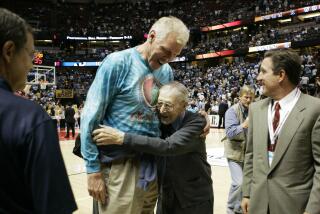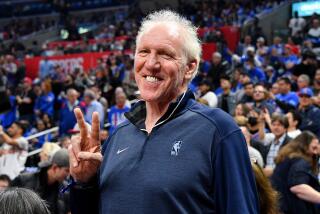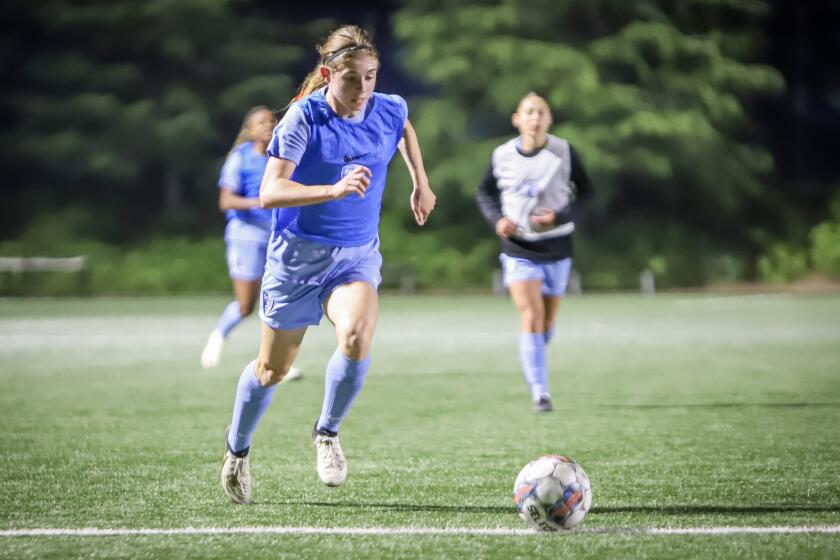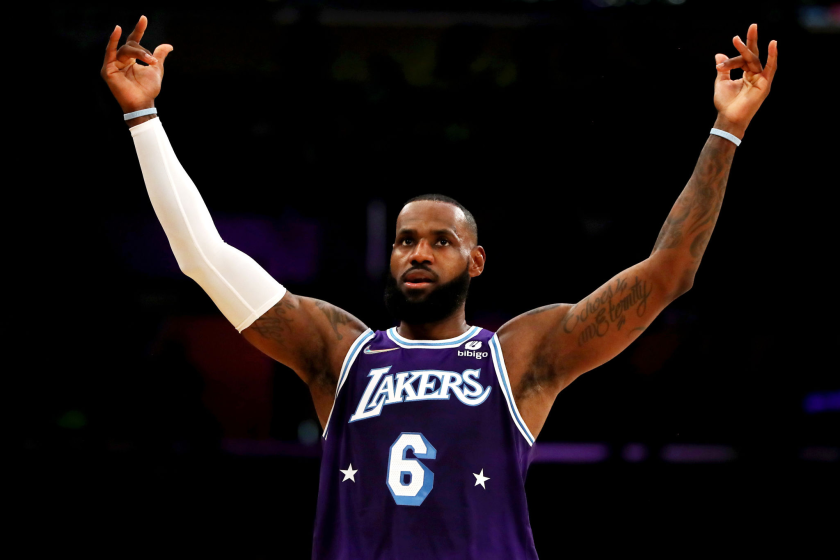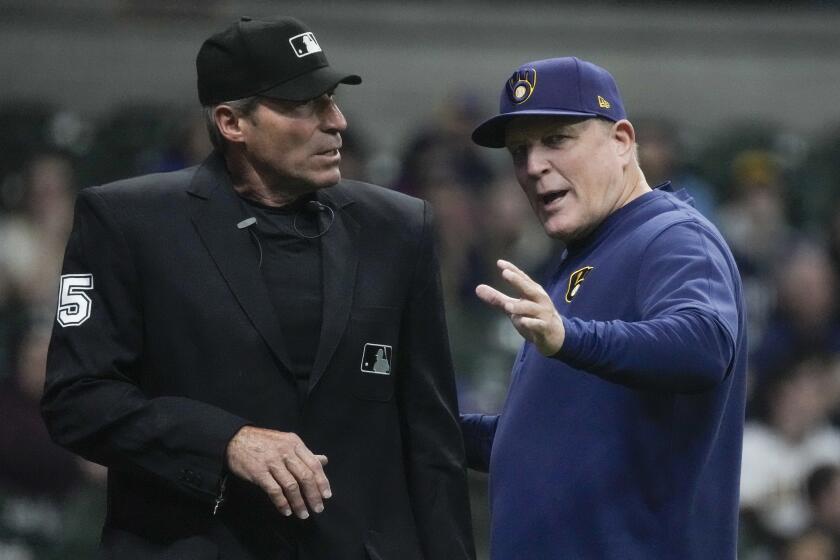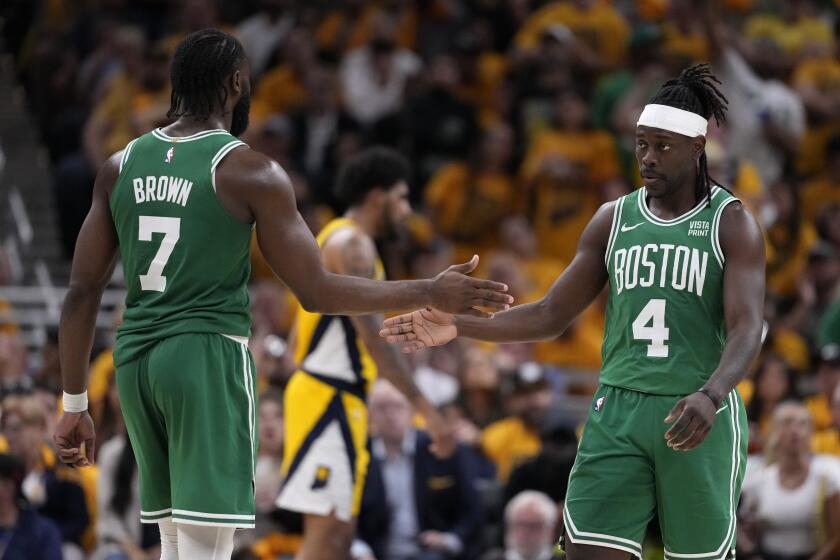NFL Teams Draft to Fill Holes, Not to Select ‘Best Athlete’ : Pro football: Operating under a new system, the other factor in the equation is time. Annual talent derby is next weekend.
In the days before the NFL had free agency and a salary cap, teams never drafted anyone but the “best available athlete.”
No more.
Modern times require that teams pick players they can plug in almost immediately--or at least in the four years before they’re eligible to fly off for more money, a better climate or a starting job.
“We all know you can’t afford to wait now for a guy to develop because he many be gone by then,” says John Butler, the general manager of the Buffalo Bills. “You draft now to plug holes.”
Which is why, when the draft takes place Saturday and Sunday in New York, Butler will be looking for offensive and defensive linemen, defensive backs and, a little later, a young quarterback.
That’s not because they’re necessarily the best athletes available when Buffalo picks 14th, but because they’re what the Bills need after the defections of Will Wolford, Howard Ballard and Nate Odomes in the first two years of free agency.
Gone are the days when you could stockpile good players and bring them along slowly as the Bills did when they built the team that brought them four straight AFC championships. Not only does free agency allow players to leave but the cap prevents good teams like Buffalo, Dallas and San Francisco to keep too many stars. They’re simply outbid by have-nots whose current players don’t command big salaries.
The Bills, who have to pay Jim Kelly, Bruce Smith and Thurman Thomas, must replace others they are letting go; the Cowboys must replace center Mark Stepnoski and wide receiver Alvin Harper; and the 49ers must find a running back to plug in for Ricky Watters.
“We know we have some needs on offense that we have to fill,” says Jerry Jones, owner of the Cowboys. “Under the old system we’d have kept a Stepnoski. So now we have to find a replacement.”
Which is why, when the Cowboys make their first-round pick, the 28th overall, they might take a Cory Raymer, the Wisconsin center, even though he is rated in most places as about the 35th best available athlete.
The Bills and Cowboys represent the symbiosis of the new system.
After two years of losing players, the Bills had enough money left to sign a few this year. So they raided the Cowboys for Jim Jeffcoat, the Packers for Bryce Paup and the Broncos for Ted Washington, all to bolster the pass rush and defensive line.
The loss of Jeffcoat forced the Cowboys to pay about $1 million more than they planned for Tony Tolbert, which was $1 million they might have earmarked for Stepnoski. Along with the aging of Nate Newton and the slow recovery of Erik Williams from a knee injury sustained last year in an auto accident, it forces them to go for what they need the most: offensive linemen.
The other factor in the draft equation is time.
Under the new system, teams have four years to determine a player’s worth, and they would prefer to find that out in one or two years.
Thus, when the New York Giants used a No. 1 pick in the 1992 supplemental draft on quarterback Dave Brown, it made last year’s release of Phil Simms nearly mandatory because Brown and Kent Graham could become free agents after the 1995 season.
“You’ve only got so much time,” said general manager George Young. “You’ve got to see what a guy can do and we didn’t want a cushion like Phil to fall back on.”
So Brown started last season and struggled, along with the rest of the team. But he also proved he can be a starting NFL quarterback and will be rewarded with the requisite contract at the end of this season.
Now the Bills find themselves in a similar situation, looking for a quarterback who can eventually replace Jim Kelly.
They could go for Rob Johnson of USC, John Walsh of BYU or Todd Collins of Michigan on a lower round. Or--and this is another bonus from the free agency era--use the extra picks they got for losing Ballard and Odomes to trade up to grab one.
But then they have to find out what they’ve got.
“Look at it this way,” Butler says. “You’ll see a lot more young quarterbacks in exhibitions and you’ll see a lot more getting into games quickly. That’s the system we live under these days.”
More to Read
Get our high school sports newsletter
Prep Rally is devoted to the SoCal high school sports experience, bringing you scores, stories and a behind-the-scenes look at what makes prep sports so popular.
You may occasionally receive promotional content from the Los Angeles Times.
